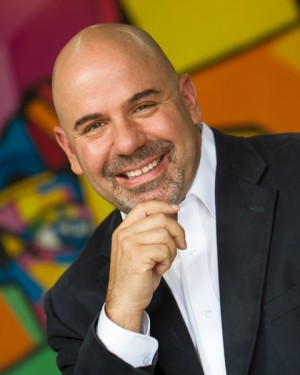The Soul of An Artist: An Interview with Ivan Jenson
GALO: You said that some of the characters are amalgamations, or they relate to people that you’ve known or family members. Did you ever worry about offending family members who might see themselves in your work?
IJ: Well, one of my brothers loved it. He’s like, “I’m guessing who is who,” and was flattered. The thing is, look out for what you ask for, because it just might happen. When I wrote these novels, I was still, things hadn’t kicked in yet, and I had a great drive that I felt that these stories had to be told. I had them burning within me, and I foresaw great drama. I happen to live a life that’s very dramatic. I didn’t think about it then.
First of all, you can’t control your writing. It flows through me. And I don’t control it, it exists, and what happens, happens. I think that a lot of the family members are getting a kick out of it. I think a lot of them are flattered. I’d love it if someone based a character on me. Sometimes I do that. I’m the one that has to base it on people.
GALO: The mother in this book is so funny and just feels so real. Can you talk about writing her character?
IJ: I wanted this running gag where it always seemed like she was about to die, and then she’s back and running, either fixing something on the roof or doing some work around the house. I just think a mother is an important character in everyone’s life. She became this larger than life character. A lot of it deals with mortality. People always worry, “Am I going to die?” He [Milo] worries he might die. So, everyone’s living right on the edge of near death, and she just came alive as a very strong character. She’s in kind of a theme and a comic angle that I work with, without giving away what happens at the end.
GALO: One of the themes is self-confidence and doubt in the life of the artist. Can you talk a little about that?
IJ: You have something, a talent. You believe in it. When I was out on the streets, people would come up to me all the time and say, “You’re gonna be the next big thing,” and you’re out there getting that response, and so you feel you can do something. [When] people tell you you’re special, and you’re going to make it to the top, then it becomes your job to make that happen. And then of course reality has its own idea for you, or for Milo. I think that he believes in himself, and even right down to the nervous breakdown, he was trying to achieve what he felt he could achieve with his art. And then, of course, his nervous breakdown struck him and brought him down again. But people are given chances. You don’t know when. Artists [are] people that strive. I’ve just been given a huge break in my life with my novels coming out, all these things happening, my poems getting published. I’m having a huge second wind now. If you just stick with it and persist, like they always say, the doors start to open.
GALO: Nick, Milo’s art dealer, gives him a huge boost of confidence. Do you think for an artist it takes the eye of one believer?
IJ: It’s a communication. Art is communication. In other words, you make something, it communicates, and then someone else has to experience that, and respond, either visually or [by] purchasing. I believe many artists have an experience with an art dealer or a collector that believes in them and it gives them a lot of energy. Many artists, Picasso, all the great artists, had important people that believed in them. Andy Warhol. They all had important people that explained to other people what that artist meant. So, it is important for an artist or a writer, to have someone believe in you.
GALO: New York City and the New York art scene is almost another character. Is New York unique among American cities or could this have happened anywhere?
IJ: My art career couldn’t have taken place anywhere else and Milo’s art career couldn’t have taken place anywhere else. I went out on the street and was discovered almost overnight by the public, and so we share that experience. New York City means a lot to me. And I think having left New York for the Midwest suddenly myself, it gave me a great perspective on both the Midwest and New York City. I needed to step away from New York City to write properly about it. Because when you live in New York City, no matter who you are — New York’s the star. I had to step away and piece it together, so it’s not so overwhelming.
New York City is a big character in my life and it’s a big character in this novel. I was also a street artist, and I really was like the statue of liberty or the empire state building myself because I used to stand out on important corners from the Upper West Side to 5th Avenue to SoHo, and I was there, daily, weekly, and I became one of the things that you just see. And, I think, I know New York as well as anyone, and was at one with it for a long time, and I intend to return one day.
(Article continued on next page)

